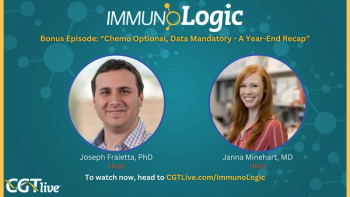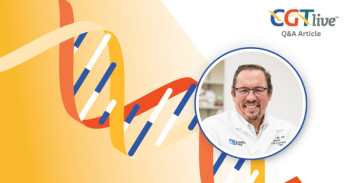
XLRS Gene Therapy Gets RPDD Designation
Atsena announced initial positive data from the LIGHTHOUSE study of ATSN-201 in May 2024.
The FDA has granted Rare Pediatric Disease Designation (RPDD) to Atsena Therapeutics’
“We are pleased to receive the FDA’s RPDD for ATSN-201, which also marks the second RPD designation granted to Atsena this year. Having both of our clinical-stage, ocular gene therapies receive this designation underscores the potential of our technology to address significant unmet needs for patients with inherited retinal diseases,” Patrick Ritschel, Chief Executive Officer, Atsena Therapeutics, said in a statement.1 “We are committed to advancing ATSN-201 in clinical trials and offering hope to patients and families affected by XLRS.”
ATSN-201 is an adeno-associated virus (AAV) gene therapy designed to address mutations in the RS1 gene that cause XLRS via the company’s AAV.SPR capsid to provide gene expression in photoreceptors in the retina. The therapy is currently being evaluated in the phase 1/2 LIGHTHOUSE study (NCT05878860), which is currently enrolling male patients of at least 6 years of age with XLRS to receive a subretinal injection of ATSN-201.
Atsena announced data from the first, low-dose cohort of LIGHTHOUSE in May 2024 demonstrating ATSN-201's positive safety profile in the first 3 participants dosed. There were no serious adverse events.2 Atsena began dosing patients in the study’s second, mid-dose cohort in March 2024.3
READ MORE:
Two of the 3 patients experienced extensive resolution of schisis beginning at 8 weeks after receiving ATSN-201 and continuing and deepening through week 24 of follow-up until data cut off. The investigators found that areas of schisis cavity resolution were found both inside and well outside of the subretinal injection blebs, demonstrated a lateral spread of the capsid.2
Using microperimetry, investigators observed functional improvements that correlated with the areas of structural improvements, with improvements of up to 14 dB seen in one patient, with 38 loci showing an improvement of greater than 7 dB. Atsena noted that the FDA considers an improvement of at least 7 dB at 5 or more prespecified loci to be clinically meaningfuland also noted that this study marks the first time demonstration of safe administration of subretinal injections in patients with extensive retinal schisis.2
“The favorable safety profile and early efficacy observed in patients treated with ATSN-201 in the low- dose cohort of the LIGHTHOUSE study are very encouraging,” Kenji Fujita, MD, Chief Medical Officer, Atsena Therapeutics, said in a statement at that time.2 “We’re particularly pleased to have clinical validation of AAV.SPR’s ability to spread laterally well beyond the subretinal injection blebs. With dosing of patients in the mid-dose cohort underway, we look forward to the swift progression of this first clinical trial utilizing our novel spreading capsid and to the continued development of our best-in-class gene therapy candidate for XLRS patients who currently lack an approved treatment option.”
REFERENCES
1. Atsena Therapeutics Receives Rare Pediatric Disease Designation from the U.S. FDA for ATSN-201 Gene Therapy to Treat X-linked Retinoschisis. News release. Atsena Therapeutics. August 14, 2024. https://www.globenewswire.com/news-release/2024/08/14/2929958/0/en/Atsena-Therapeutics-Receives-Rare-Pediatric-Disease-Designation-from-the-U-S-FDA-for-ATSN-201-Gene-Therapy-to-Treat-X-linked-Retinoschisis.html
2.Atsena Therapeutics Announces Positive Clinical Data from the First Cohort of Phase I/II Trial Evaluating ATSN-201 Gene Therapy for the Treatment of X-linked Retinoschisis (XLRS). News release. Atsena Therapeutics. May 1, 2023. https://atsenatx.com/press-release/atsena-therapeutics-announces-positive-clinical-data-from-the-first-cohort-of-phase-i-ii-trial-evaluating-atsn-201-gene-therapy-for-the-treatment-of-x-linked-retinoschisis-xlrs/
3. Atsena Therapeutics Announces Initiation of Dosing in Second Cohort of Phase I/II Clinical Trial Evaluating ATSN-201 Gene Therapy for the Treatment of X-linked Retinoschisis (XLRS). News release. Atsena Therapeutics. March 13, 2024. https://www.biospace.com/atsena-therapeutics-announces-initiation-of-dosing-in-second-cohort-of-phase-i-ii-clinical-trial-evaluating-atsn-201-gene-therapy-for-the-treatment-of-x-linked-retinoschisis-xlrs
Newsletter
Stay at the forefront of cutting-edge science with CGT—your direct line to expert insights, breakthrough data, and real-time coverage of the latest advancements in cell and gene therapy.





































